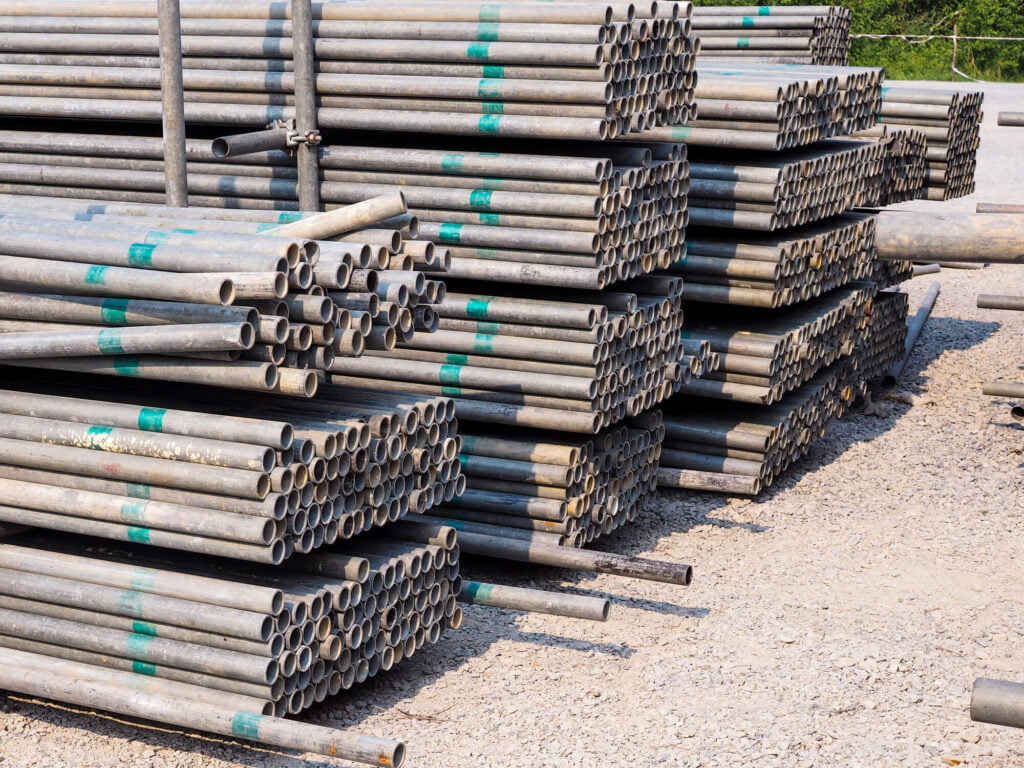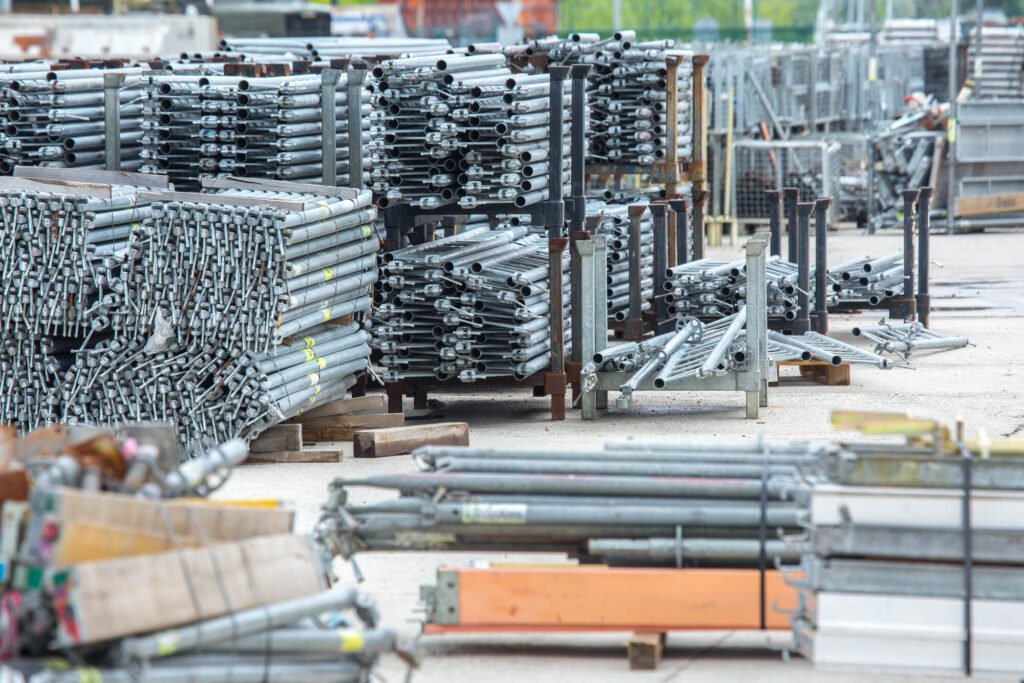Scaffolding is crucial when providing sturdy and safe access when working at height. It’s advisable to store the scaffolding components properly to avoid compromising their quality and effectiveness. If they’re unfit to be used, you’ll need to replace them immediately. Proper storage ensures the components remain in good condition. Here’s how to store your scaffolding equipment.
1. Keep your equipment off the ground

When storing scaffolding, it’s advisable to ensure that the equipment doesn’t touch the ground to prevent any damage. You should put something sturdy that can support all the weight underneath. Keeping equipment off the ground will ensure that no one trips over them thus avoiding any accidents.
2. Ensure that there’s easy access
You should ensure that the scaffolding components can easily be accessed. Leaving the equipment in a disorganised manner will make it hard to access what you need. This also makes the equipment prone to damage and others can get misplaced. Ensuring there’s easy access will help you save time.
3. Ensure there’s safe movement of handling equipment
It’s advisable to ensure that you leave adequate room for handling types of equipment like forklifts vans or trucks. You should ensure that you leave enough space for vehicles to manoeuvre. It could be dangerous having a driver manoeuvre when there are things laying around.

4. Avoid blocking any doors or emergency exits
In case of any emergency, you need to be able to exit using any of the exits. Properly organising your scaffolding components ensures that none of the passages is blocked. You should also ensure that any warning and safety signs aren’t blocked by the scaffolding equipment. Blocking any signs or emergency exits is a violation of Health and Safety regulations and it can cause serious harm to the persons involved.
5. Different components should be kept in separate stacks
Arranging different components in separate stacks makes it easier to locate the parts you need during assembly. You’ll also avoid losing any small parts. It’s advisable to stack components with similar lengths and sizes together. You can use clearly marked boxes or storage containers to store any small components to avoid misplacing them.
6. Ensure the scaffolding components don’t roll over
You should add blocking to ensure that the scaffolding tubing doesn’t roll over. This can cause serious harm to any staff member who might be nearby. You should also avoid stacking the components too high because this makes them inaccessible.
7. Avoid storing components when wet
To reduce the chances of rot and rust, you should ensure that all your scaffolding components are properly dried before storing them. When it comes to scaffold planks, storing them when wet increases the chances of fungal decay and rot which interferes with their quality and credibility.
You should also store the planks with spacers in between to allow free and sufficient air circulation. This will help keep the boards dry.

8. Keep your storage area dry and tidy
Keeping your storage area dry and tidy enhances the longevity of your scaffolding components. A dry storage area reduces the chances of mildew and rot. To protect your scaffolding components, you should ensure that they’re properly covered.
With an idea of how to properly store scaffolding, you will significantly enhance the longevity of your components. You also get to save money you’d use to replace damaged components if they were poorly stored.